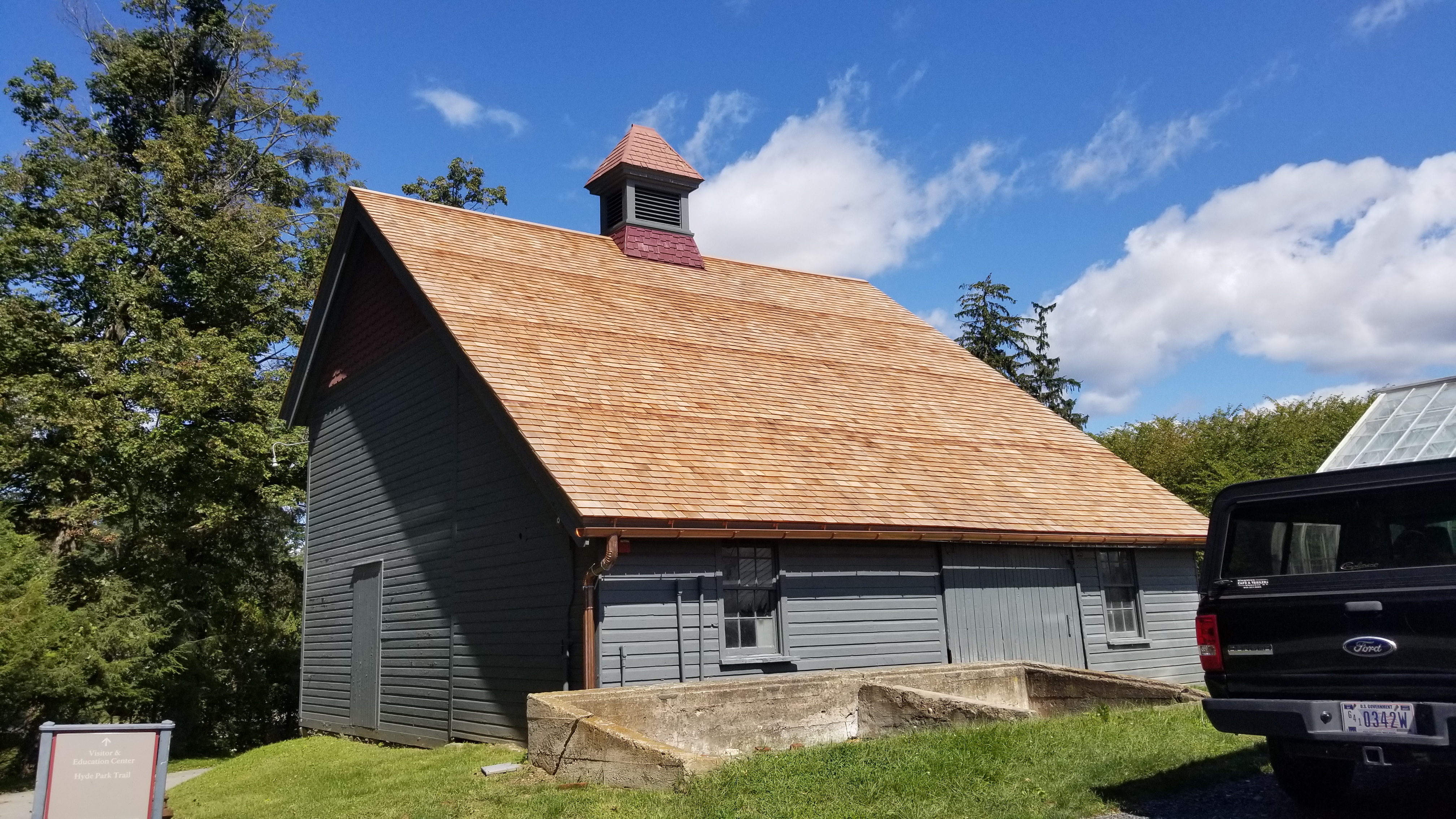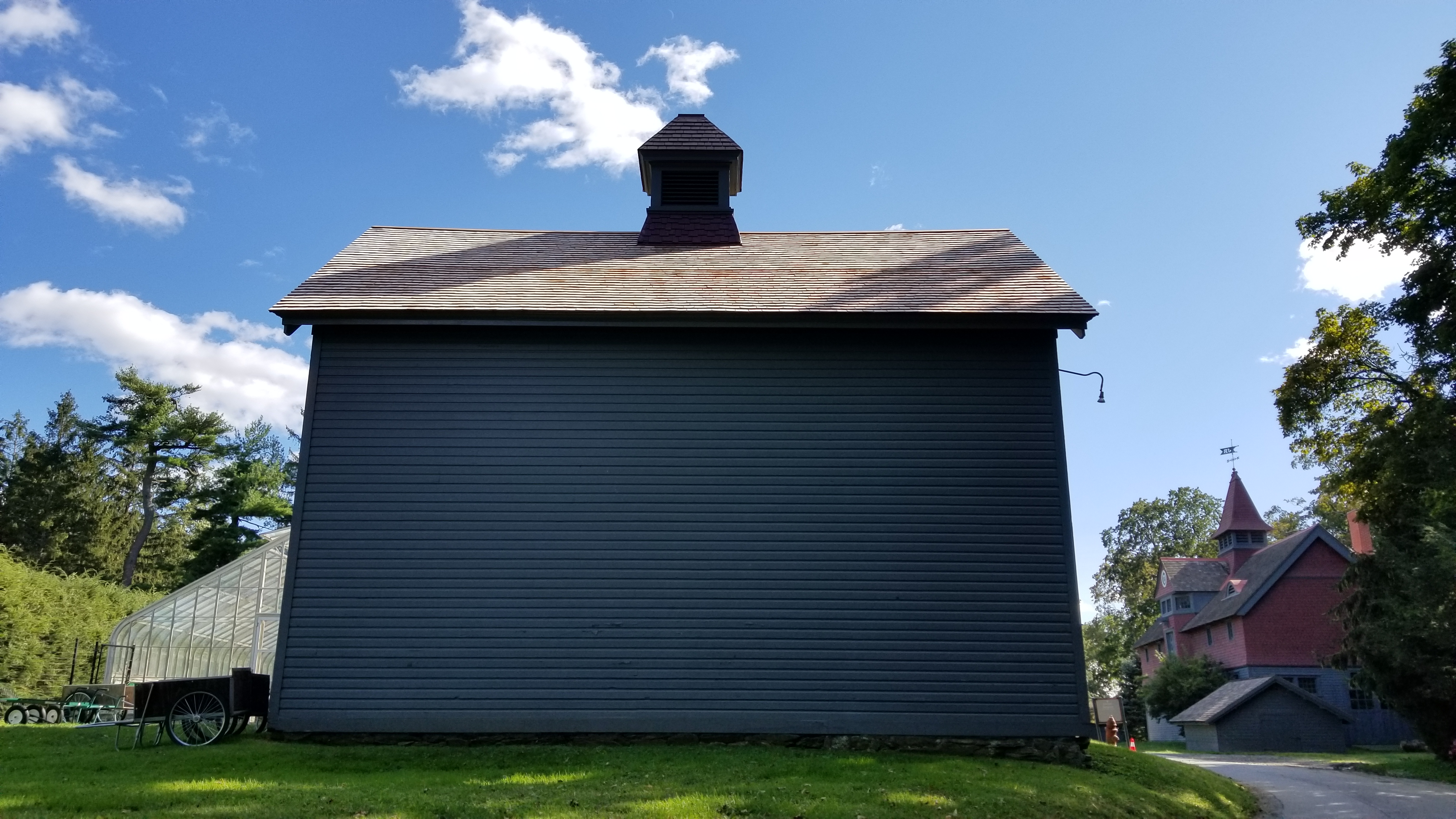My name is Elizabeth Nicholson. I'm originally from Barryville, NY but currently living in New Paltz, NY. For the past five years, I have worked as a curatorial technician for a number of museums in Pennsylvania and the Hudson Valley. I have always had a passion for architectural history and am constantly looking for opportunities to expand my knowledge of preservation so when the opportunity for a Traditional Trades Apprenticeship Program (TTAP) position became available at ROVA I decided to pursue it.
In order to replace the Ice House roof, we first assessed safety risks and then assembled scaffolding before removing shingles with the help of our mentors Brian McDermott and Chad Rymph along with Mike Bellocchio and Mike Graziano two other members of the Buildings & Utilities team. We then began laying down shingles paying special attention to not creating a pattern on the roof. At first, Marie and I handed shingles up to Chad and Brian to nail down. After becoming more familiar with the process we began nailing shingles ourselves. Once we shingled up to the top of the roof we used a break (a large press used to fold metal) to create flashing for the cupola and a copper cap for the roof. When they were in place we placed a cedar cap on top of the copper for added protection. All in all the process took approximately two months to complete.
The number one challenge of this project was the heat. It was difficult working so high up directly in the sun, especially when we were putting up copper flashing which caused the sun to be reflected back at us.
There were so many rewarding aspects of this project, the largest for me being the knowledge that our work has helped to preserve a historic building. It was also incredibly rewarding to learn from and getting to know two incredibly skilled and knowledgable carpenters. With their help, I gained confidence using hand and power tools, learned about cedar shingles and roofing in general, helped to erect scaffolding, and found out just how rewarding working on a carpentry team is. I don't believe I've ever had a position that was as enjoyable and enriching as the time I've spent with Chad and Brian. Preservation of historic buildings like the Ice House is important because it allows visitors a more full understanding of historic properties as well as provides historians invaluable information about the past of historic properties in addition to common or unique building practices and building materials in specific regions.
In my term at Roosevelt-Vanderbilt I have also worked on painting exterior walls and preparing a new door for the Playhouse at Eleanor Roosevelt National Historic Site (ELRO), installing a new floor in the garden shed at ELRO, installed a sign for visitors at ELRO, worked on the Springwood balustrade project alongside the Historic Preservation Training Center woodworking crew, painted an office at Bellefield, helped install copper gutters on the Ice House and at the Duplex, and a number of other small projects.
In the course of my term here I have fallen in love with carpentry and decided to switch from curatorial work to carpentry full time. My work with Brian and and Chad has provided me with basic skills and knowledge on which to build my new career in carpentry.
Click here to learn more about the Traditional Trades Apprenticeship Program.

(Above and below) Elizabeth, Marie, and the Roosevelt-Vanderbilt maintenance crew worked hard this summer replacing the Ice House's roof. (NPS photo)

